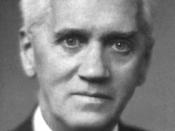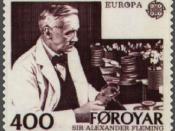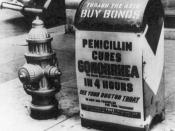ABSTRACT
The history of Alexander Fleming's discovery of penicillin in a common mold, in 1928, and the subsequent development-prompted by World War II injuries-of large-scale manufacturing methods to grow the organism in tanks of broth has proved to have saved many lives. Even though it is not held in as high esteem now, penicillin continues to save millions of lives.
Introduction
Before the 21st century, medical practice was unlike what is known today. In the early 1800's, anesthetics were unheard of. Even sterilization was not practiced. Instruments used in surgery were generally re-used without cleaning them. Scientists such as Louis Pasteur showed research that linked disease to bacteria, but many did not believe in its validity. Joseph Lister found it highly important and continued research on the relationship of bacteria to disease. He discovered simple ways to avoid surgical deaths. Lister published his work in 1867 and many adopted his procedures to maintain sterile conditions during any surgery.
Yet, many still did not accept the link between disease and unseen organisms. In 1890, a French medical student, Ernest Dushesne, stumbled across a mold capable of destroying bacteria. However, his work was overlooked until a Scottish Physician, Alexander Fleming, decided to investigate a strange substance on a dirty petri dish (Brown).
Fleming served in World War I and was concerned over the number of soldiers lost from simple flesh wounds. He was determined to find a way to stop the growth of bacteria. In 1928, he cleaned up a pile of petri dishes growing bacteria. He noticed in one that mold was growing. Nothing too unusual until he realized where mold laid the bacteria died. He discovered the mold belonged to the Penicillium family and later published his findings in 1929.
However the public awareness of its remarkable healing...


